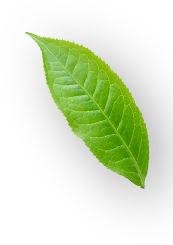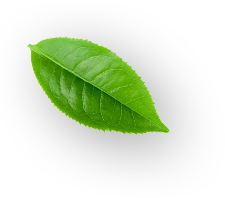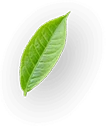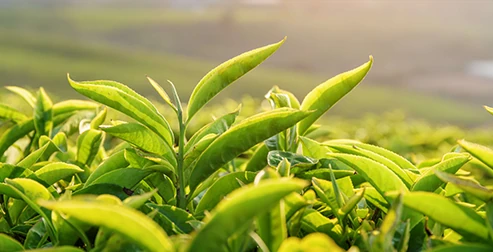


Oolong (UK: /ˈuːlɒŋ/, US: /-lɔːŋ/; simplified Chinese: 乌龙茶; traditional Chinese: 烏龍茶 (wūlóngchá, "dark dragon" tea) is a traditional semi-oxidized Chinese tea (Camellia sinensis) produced through a process including withering the plant under strong sun and oxidation before curling and twisting.[1] Most oolong teas, especially those of fine quality, involve unique tea plant cultivars that are exclusively used for particular varieties. The degree of oxidation, which varies according to the chosen duration of time before firing, can range from 8 to 85%,[2] depending on the variety and production style. Oolong is especially popular in south China and among ethnic Chinese in Southeast Asia[3] as is the Fujian preparation process known as the gongfu tea ceremony.
Different styles of oolong tea can vary widely in flavor. They can be sweet and fruity with honey aromas, woody and thick with roasted aromas, or green and fresh with complex aromas, all depending on the horticulture and style of production.[1] Several types of oolong tea, including those produced in the Wuyi Mountains of northern Fujian, such as Da Hong Pao, are among the most famous Chinese teas. Different varieties of oolong are processed differently, but the leaves are usually formed into one of two distinct styles. Some are rolled into long curly leaves, while others are "wrap-curled" into small beads, each with a tail. The former style is the more traditional.
The Chinese term wulong (oolong) was first used to describe a tea in the 1857 text Miscellaneous Notes on Fujian by Shi Hongbao. In Chinese, oolong teas are also known as qingcha (Chinese: 青茶; pinyin: qīngchá) or "dark green teas". The term "blue tea" (French: thé bleu) in French is synonymous with the term oolong.[4] Oolong teas share some characteristics with both green and black teas - they have light flavour notes but are often more complex in taste than green teas, but not as strong as black teas.[5]
The manufacturing of oolong tea involves repeating stages to achieve the desired amount of bruising and browning of leaves. Withering, rolling, shaping, and firing are similar to black tea, but much more attention to timing and temperature is necessary.[6]

The exact origin of the term is impossible to state with certainty. There are three widely espoused explanations of the origin of the Chinese name.[7] According to the "tribute tea" theory, oolong tea came directly from Dragon-Phoenix Tea Cake tribute tea. The term oolong tea replaced the old term when loose tea came into fashion. Since it was dark, long, and curly, it was called Black Dragon tea.
A tale tells of a man named Wu Liang (later corrupted to Wu Long, or Oolong) who discovered oolong tea by accident when he was distracted by a deer after a hard day's tea-picking, and by the time he remembered to return to the tea it had already started to oxidize.[8]


Tea production in Fujian is concentrated in two regions: the Wuyi Mountains and Anxi County. Both are major historical centers of oolong tea production in China.

The most famous and expensive oolong teas are made here, and the production is still usually accredited as being organic. Some of the better known cliff teas are:

Recommended brewing techniques for oolong tea vary widely. One common method is to use a small steeping vessel, such as a gaiwan or Yixing clay teapot, with a higher than usual leaf to water ratio.[15] Such vessels are used in the gongfu method of tea preparation, which involves multiple short steepings.[16]
For a single infusion, 1-to-5-minute steepings are recommended, depending on personal preference.[17] Recommended water temperature ranges from 80–95 °C (180–205 °F).[17][15]





Oolong contains caffeine,[18] although the caffeine content in tea will vary based on terroir, when the leaf is plucked, and the production processes.

Some semi-oxidized oolong teas contain acylated flavonoid tetraglycosides, named
...teaghrelins due to their ability to bind to ghrelin receptors. Teaghrelins were isolated from Chin-shin oolong tea[19] and Shy‐jih‐chuen oolong tea[20] and recently from other oolong tea varieties.